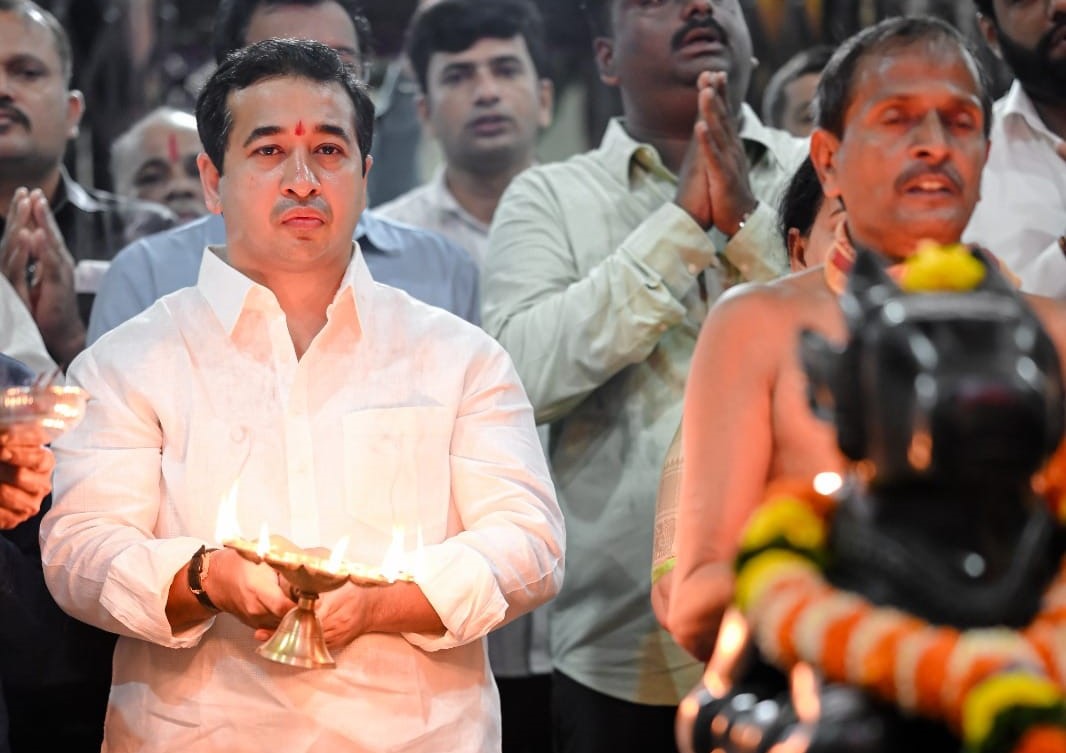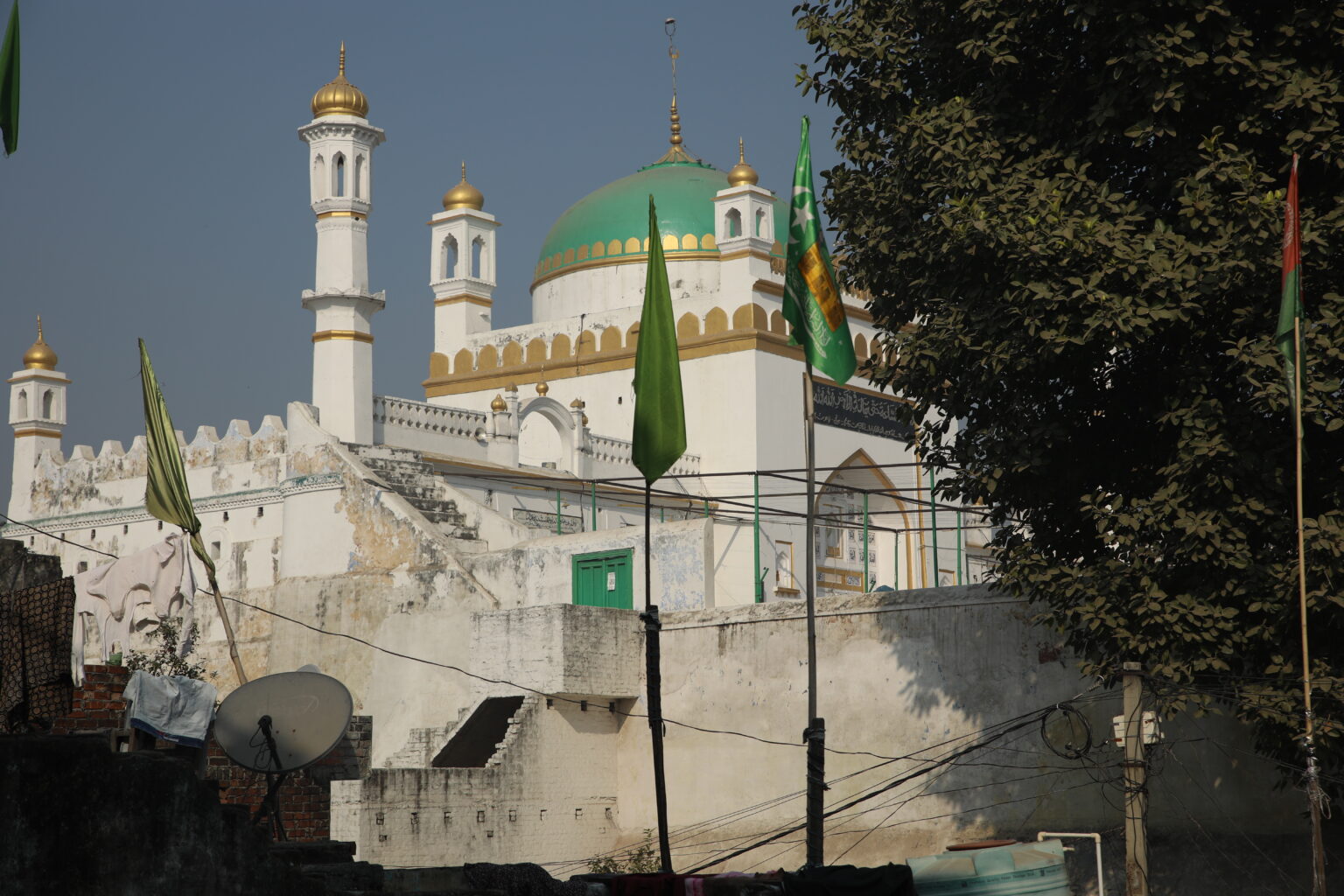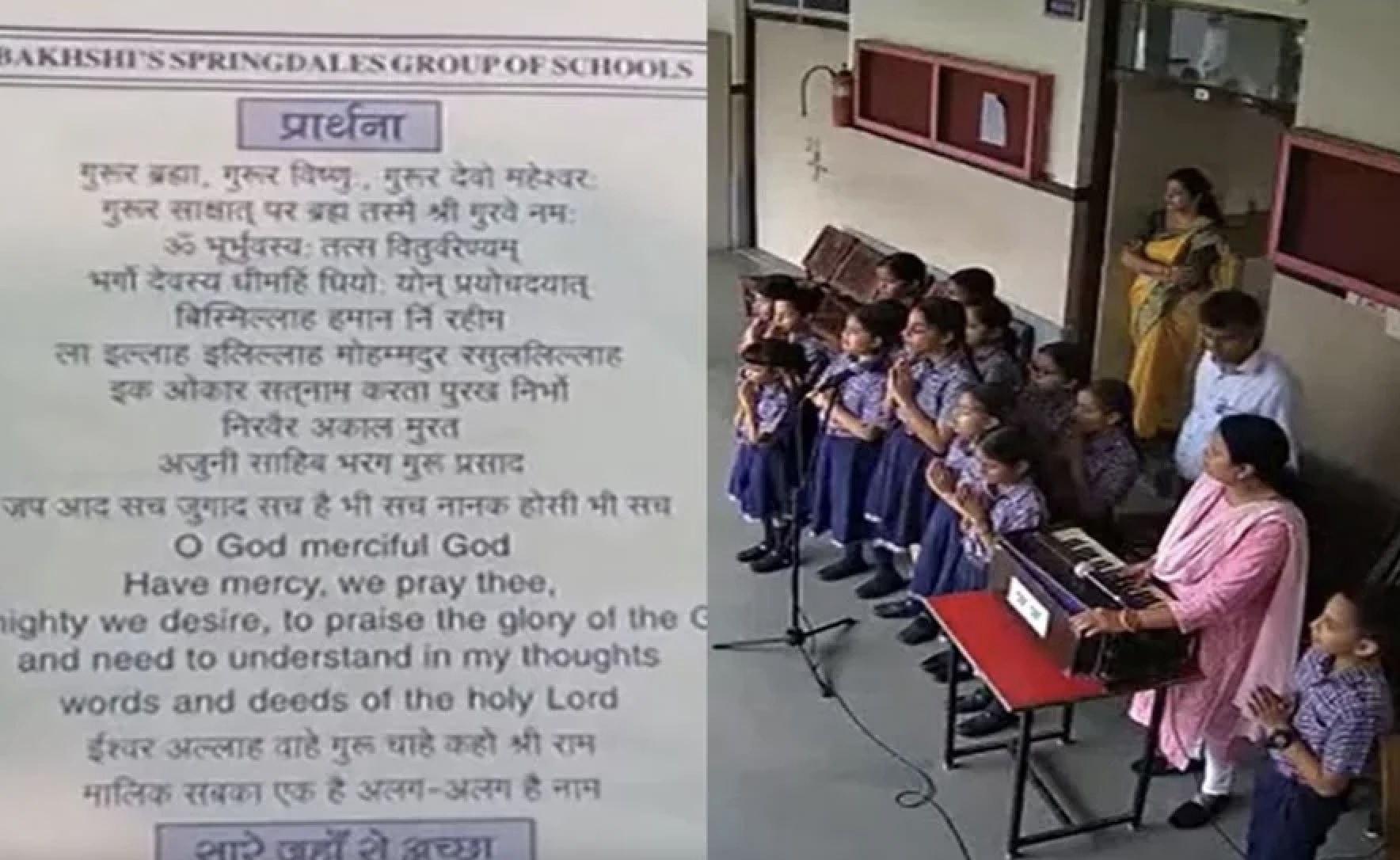
VARANASI, India—The seven pandits draped in cloth of gold are clearly competing against the five in saffron. In front of thousands of assembled pilgrims, each bevy of priests furiously recites Sanskrit chants, deftly swinging pyramids of flaming oil lamps, banging on bells and blowing on conch shells, wafting thick clouds of incense over the moonlit waters of the limpid, unlistening Ganges. The celebration of Ganga Aarti has taken place daily at this spot for hundreds, or perhaps thousands, of years.
This is Hinduism. But it is not Hindutva, the creed of the governing Bharatiya Janata Party (BJP). And the difference between them—between the practices of faith and politics—may determine the future of what will soon be the largest nation on Earth.
Here in Varanasi, posters of Prime Minister Narendra Modi are slapped on crumbly ancient walls, splintery doorjambs, a tangle of electrical wires draped perilously over a traffic circle. Orange-and-green flags bearing the lotus leaf of the BJP flutter on bicycle rickshaws, rooftops, and rowboats plowing their way along the holy Ganges. In much of the city, these are the only election signs one can see: You generally have to dive into the twisty alleyways near a mosque to find a few timid banners for the Indian National Congress or any other BJP rival.
The city of Varanasi is the holiest site in the Hindu faith. It is also, not coincidentally, the parliamentary constituency of Modi, who has just won a second five-year term. He did it, in large measure, by emphasizing Hindutva, an ideology that seeks to reformulate Hinduism into something that most practitioners’ grandparents would barely understand.
/media/img/posts/2019/05/export_2qNly/original.png)
Religions change—that’s as timeless as time. But the transformation currently under way in Hinduism is among the most significant in modern history. It has much in common with similar changes taking place in Islam, Buddhism, and Christianity: Why are so many radical Islamists poorly versed in the Koran? How can Buddhist monks sworn to nonviolence lead pogroms in Myanmar and Sri Lanka? Why do evangelical Christians care so much about issues never mentioned by Jesus, such as abortion and homosexuality? The answer is not always hypocrisy. For many today, religion is less a matter of what you believe, or even what you do, than of who you are.
The term Hindutva can be (sort of) translated as “Hindu-ness,” and that gets (sort of) at what it’s all about: Hinduism not a theology, but an identity. The movement’s intellectual father, Veer Savarkar, wrote its foundational text (helpfully titled Hindutva) a century ago. At the time, the notion of a unified faith or doctrine, let alone a shared identity, would have left most Hindus simply confused: Identity was determined by a person’s family, village, caste. The very term Hindu is merely a loanword (most likely from Persian), referring to “the people who live across the Indus River.” Until the 20th century, most Hindus had never felt the need to describe themselves in any comprehensive way.
It was the colonial experience that created Hindutva: Why, Savarkar and his comrades wondered, had India been dominated for centuries by a relatively small number of Muslim Mughals and Christian British? Was monotheism simply better suited for ruling? If so, what did that mean for a faith with more deities than days in the year? During the founding decades of the Hindutva movement, much effort revolved around making Hinduism more like its rivals: building a single shared identity to unite everyone for whom India was, in Savarkar’s words, “his Fatherland as well as his Holy-land.” This definition conveniently roped in Sikhs (a disproportionate number of whom served in the army), Buddhists (whose spiritual cachet helped give the movement credibility), and Jains (who tended, then and now, to be quite rich).
What it pointedly did not do was dictate what this newly lumped-together group of people should believe. Indeed, very few of Hindutva’s leading lights have been holy men, or even particularly devout; Savarkar and K. B. Hedgewar (the founder of the Rashtriya Swayamsevak Sangh, or RSS—the primary vehicle for Hindutva mobilization) are both described as having been atheists or agnostics. The point wasn’t doctrine, but branding.
The only figure who did more to reshape Hinduism than the Hindutva founders was Mahatma Gandhi. His vision of the faith was, in many ways, the absolute inverse of Hindutva: He cared nothing about branding, and a great deal about belief. It was an ideal so familiar today that one can easily forget what a break from the past it represented. Gandhi’s radical embrace of nonviolence drew not only from Hindu tradition, but, as he famously said, also from the Sermon on the Mount, from Buddhist texts, and even from Leo Tolstoy. After a member of Savarkar’s group assassinated Gandhi in 1948, the entire Hindutva movement was discredited for a generation.
Fast-forward to 2019: Gandhi’s murderer has been praised as a “patriot” by a candidate running on Narendra Modi’s ticket, and while the prime minister has said he disagrees with the remark, he did not withdraw his party’s backing. (The candidate won.)
Varanasi was not always a Hindutva stronghold. Instead, it was long held by Congress, the party of Gandhi and India’s first prime minister, Jawaharlal Nehru. When Modi ran for the seat five years ago, he hedged his bets by simultaneously contesting from a safer constituency in his native state of Gujarat (you can do that in India’s parliamentary system). Although he was a lifelong RSS member, Modi explicitly refrained from running on a Hindutva platform, using the slogan “Toilets, not temples” to emphasize his commitment to an earnest, technocratic, getting-things-done attitude.
But getting things done requires … getting things done. Modi has instituted some economic reforms, but after an initial spurt, the economy’s growth rate has slowed. New investments have fallen since Modi took office, and his promise of extensive job creation remains largely unfulfilled. His signature demonetization effort (taking the vast majority of banknotes out of circulation) made many families’ life savings valueless and caused hardship to almost everyone.
To compensate, Modi and his followers ramped up the Hindutva pitch. First came the “love jihad”—false accusations that Muslim men were wooing and impregnating Hindu women to change India’s demographic balance (Muslims make up about 14 percent of the population, Hindus about 80 percent). Next came the “cow protection” lynchings in BJP-controlled states such as Uttar Pradesh (UP): Gangs of Hindu men killed Muslims whom they falsely accused of eating beef. Cow slaughter has been banned in several Indian states by non-BJP governments, but it had never led to widespread attacks egged on by government officials.
Perhaps most ominously, in 2017 Modi appointed the radical priest Yogi Adityanath as chief minister of UP, India’s largest state. Adityanath’s militancy makes Modi seem almost moderate—and Adityanath openly covets his patron’s office. To top it all off, over the past half year, Modi has engaged in the most serious armed combat with Muslim-majority Pakistan in two decades. Pakistan prompted the action, but Modi’s changing his Twitter handle to Chowkidar (“Watchman”), and encouraging his supporters to do likewise, was purely his own choice.

This is Hindutva. But it is not Hinduism. The stakes here are not faith or practice—nobody is threatening to stop Varanasi’s pandits from making their Ganga Aarti. Instead, the issues are those of identity: We’re being outbred by minorities. We’re being laughed at by the world. We’re overrun with immigrants—and you know what kind. We’re second-class citizens in our own nation. Make India Great Again.
From the distance of Delhi, it can look as if Hindutva was the determining factor in this election—and perhaps the driving force in India’s political future. But so many things in India resemble Schrödinger’s cat: They simultaneously are and are not. Yes, Hindutva dominated the national debate. Yes, Modi ran on Hindutva themes. And, yes, voters responded to them in a way that strengthens the power of Hindutva as a political and social creed. But to a large degree, the success of Hindutva today lies less in its ideology than in its rebranding of prosaic, everyday concerns as matters of personal identity: When Modi speaks, many voters feel, he’s speaking for me.
In more than a dozen interviews on polling day, not one voter in Varanasi raised issues such as the “love jihad” or the cow slaughter as a reason for either supporting Modi or opposing him. The rationales that both his fans (the large majority here) and his foes (a not-insignificant minority) gave were remarkably similar: He had, or had not, gotten things done. None of them knew whether the GDP per capita had gone up or down, and none of them cared. Modi’s most ardent admirers spoke of vikas (“development”) and swasti (“success”). Said a shop assistant named Yogis Dubey outside the polling station at Gurudham Chauraha: “Kashi ko saaf benaiya!” (“He made Varanasi clean!”).
The streets of India’s holiest city are, in fact, still thick with the excrement of goats, sheep, dogs, pigs, water buffalo, and herds of auspicious cattle. But that’s not really the point: Hindutva is not about what your eyes tell you; it’s about what your heart tells you. It’s not about what you see; it’s about how you see yourself. How you see your identity, your brand, your place in the world. Understand this, and you can better understand the changes under way in India.
This article first appeared on theatlantic.com






